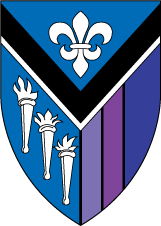Sunday, March 4, 2012
Chapter 10 - Telling Stories
Last weekend, I sat through a great program about the life of free Blacks during slavery. There were four presenters that presented information to the group, and it was a case study for how to give presentations. The presenters shall be nameless to protect the innocent. The first presenter elaborated on the material life of slaves and free blacks antebellum. Her style was very scholarly and dry, which was difficult to listen to. It just made me think of youngsters being presented great information but being disconnected because of the delivery style. I am glad that as an adult that I can concentrate through the delivery of such a style, which is a true skill. The last presenter was an actress that played the role of a great educator in our county and she interacted with the crowd through call and response and other techniques. We were on the edge of our seats listening the great story of Ms. Virginia Randolph. The information was great from both presenters, but the art of storytelling is hard to beat. Sometimes being too scholarly is a deficit if you don't reach the target audience.
References
Burmark, L. (2011), They Snooze You Lose: The Educator's Guide To Successful Presentations
Chapter 11 - Engaging Senses
The last few chapters in the text threw me a curve ball. I was just trying to see how I was going to implement the strategies beyond the original scope of the assignment. The themes that I chose in the presentation were very artistic in nature and I can see how it could engage the senses more deeply in an art class where the student learners were being taught by an upcoming artist and had the opportunity to smell the paint, feel the textures of the ingredients as they learned how to mix them into the paint. Can your hear the bold sounds of the music in the background as the painter broadly strokes the medium? If I would have developed a big picture of the initial presentation and how it could be incorporated in a workshop that the learners had access to manipulatives and other tools would have been wonderful. In the next chapter, when we put it all together then I will rearrange to the scope and breadth of the work to make learning about copyrights memorable instead of just informational.
References
Burmark, L. (2011), They Snooze You Lose: The Educator's Guide To Successful Presentations
Subscribe to:
Posts (Atom)
